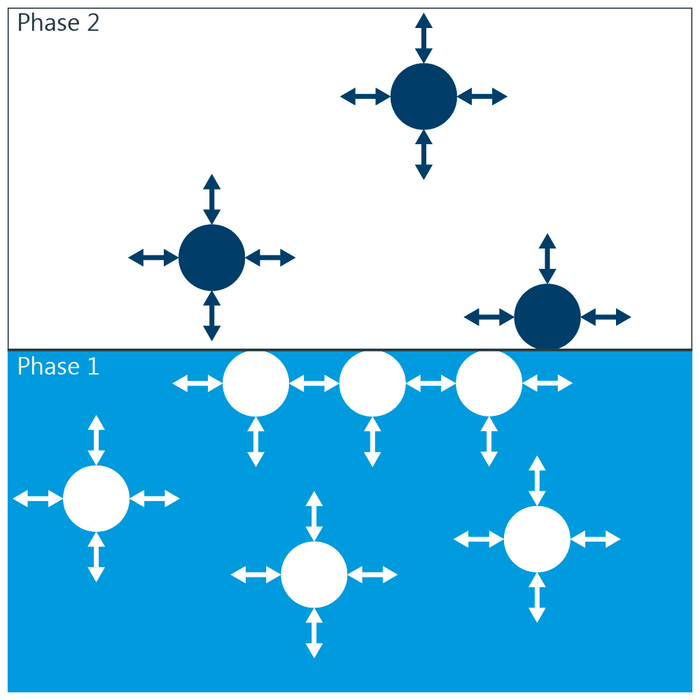Surface tension
The work which is required to increase the size of the surface of a phase is referred to as the surface tension. As a measure of work per unit area or force per wetted length, surface tension has the unit mN/m and is designated by the symbol σ (lower case sigma).
If the phase is solid, the equivalent term surface free energy is normally used. If the adjacent phase is a liquid or a solid, reference is made to interfacial tension.
Background
Compared with the volume phase, a molecule at the surface of a liquid meets fewer molecules with which it can form interactions. Presence at the surface is therefore less beneficial from an energy point of view. A liquid therefore assumes the smallest possible surface area without the action of external force. Work must be done in order to increase the area of the surface.

In the case of liquids with surface-active molecules (surfactants), the surface tension is time-dependent until an equilibrium has been established. At this equilibrium, the measured surface tension is called static surface tension. If, on the other hand, the time-dependent value is measured, this is the dynamic surface tension.
Significance
The surface tension determines the behavior of liquids in a number of processes and phenomena:
- Wetting and wettability: The wetting of a solid by a liquid depends, among other things, on the surface tension. This plays a major role in washing and cleaning, and also in wetting processes such as printing and coating.
- Droplet size: With a spray or an emulsion, the total surface area of the droplets is larger the smaller the individual droplets get. The size of droplets produced therefore depends on the surface tension.
- Dispersions and dispersibility: Boundary surfaces are formed between solid particles and the liquid during dispersion. A high surface tension has a negative effect on the dispersibility, as contact between similar particles is preferred (formation of clots).
Measuring methods
- Ring method according to Du Noüy: The force acting on an optimally wettable ring as a result of the tension of the withdrawn liquid lamella when removing the ring is measured in this method.
- Plate method according to Wilhelmy: The force acting on an optimally wettable plate which is immersed vertically in the liquid is measured in this method.
- Rod method: As the plate method, wherein a cylindrical rod with a smaller wetted length is used for measurement with a smaller liquid volume.
- Bubble pressure method: The maximum internal pressure of a gas bubble which is formed in a liquid by means of a capillary is measured.
- Drop volume method: The volume of a drop of liquid produced at a vertical capillary is measured at the moment of its detachment. This method is mainly used for measuring the interfacial tension.
- Pendant drop method: The shape of a drop suspended from a needle is determined from the surface tension and the weight of the drop. The surface tension can be ascertained from the image of the drop using drop shape analysis.







